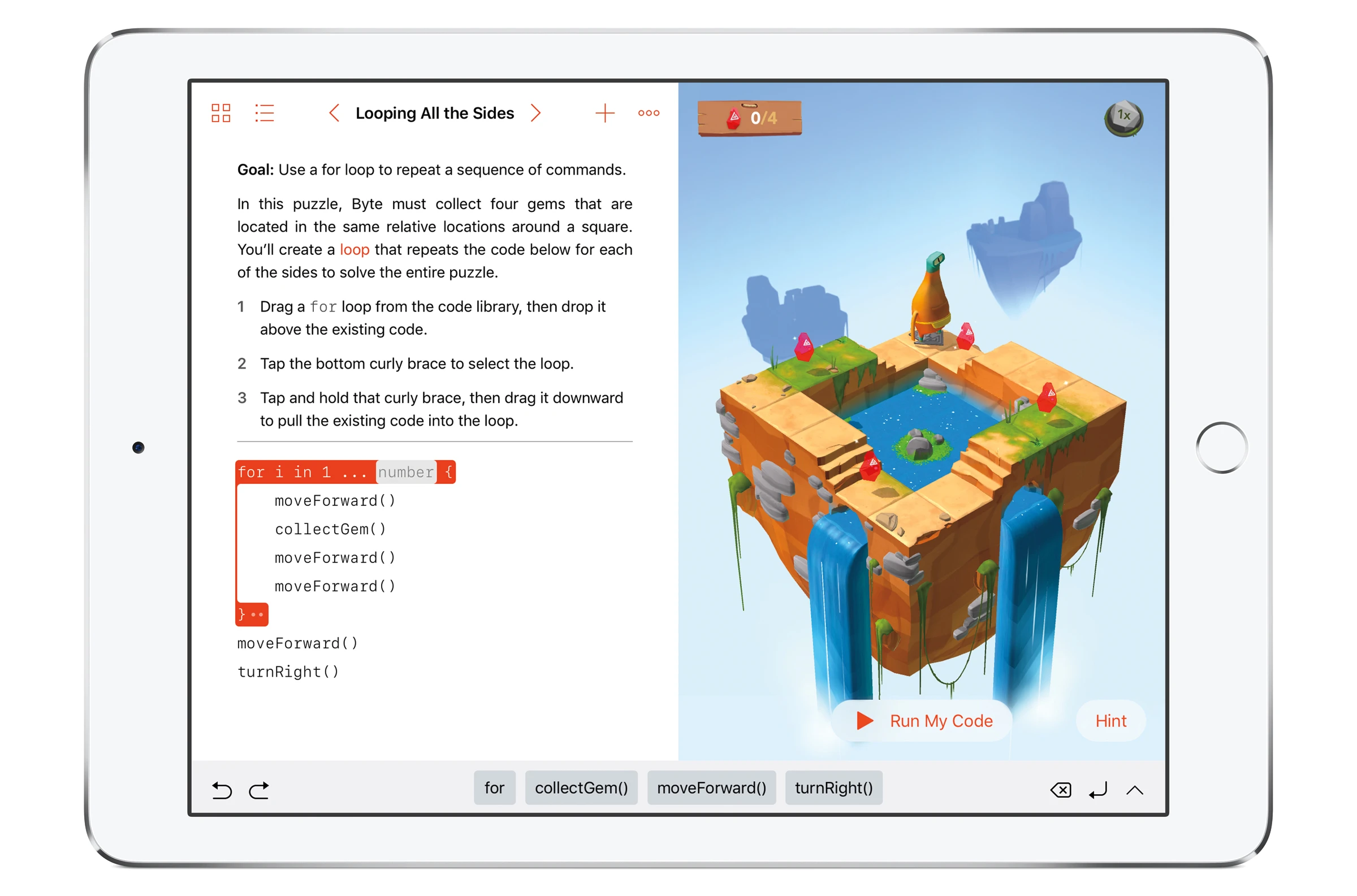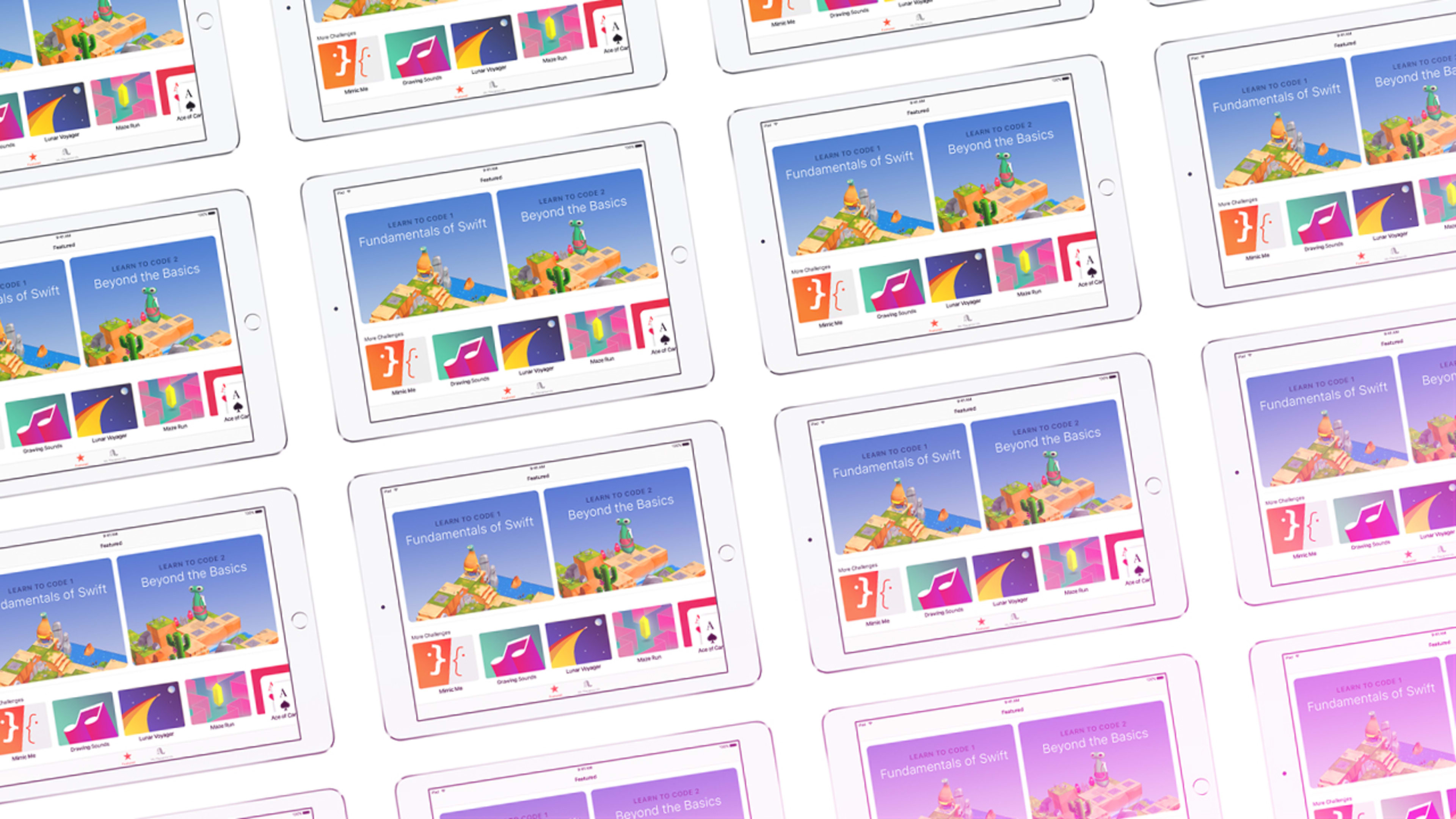Young coding students today often learn to program using a visual “drag-and-drop” language like MIT’s Scratch, which turns complex syntax into blocks and saves students the trouble of correcting spelling and punctuation. But as they progress, many students get frustrated: They want to do real programming, in grown-up languages, and make apps like the ones they use with their friends every day.
Enter Swift Playgrounds, Apple’s new “learn to code” iPad app, which launched today and is designed with those learners in mind. Playgrounds starts with the basics, introducing students to concepts like issuing commands and running loops. But as they build their knowledge and skills, there is no need to transition to a real-world scripting language. They are already coding in Swift, a language designed by Apple to complement the iOS ecosystem.
As programming languages go, Swift is quite new. Apple introduced it in 2014, as a way to give programmers more comfortable with Ruby than Objective-C the best of both worlds. Since then some major companies have rewritten their iOS apps using Swift—LinkedIn, Pandora, and Twitter, to name a few—but the language is by no means a universal within the App Store.
Playgrounds aims to change that, via charm offensive. It features a friendly one-eyed monster who wriggles and waves his way through a sunshine-filled digital world. Instructions and lines of code appear on the left of the iPad screen, and an animated execution of the code sequence that a student writes from scratch or adapts from a lesson appears on the right. Thanks to clever shortcuts, the app is touch-screen friendly—a novelty in the programming world.

Playgrounds arrives at a time when Apple is losing education market share to rivals Google and Microsoft. Previously, fancy apps like Playgrounds sold iPads quickly; now, schools are more likely to buy devices like Google’s low-cost Chromebooks, which allow them to easily set up student accounts and manage classroom activities and assignments.
Apple also faces stiff competition within the world of coding apps. From Codecademy to Treehouse, there are dozens of options for learning the fundamentals. Minecraft: Education Edition launched this fall, giving parent company Microsoft an opportunity to extend its reach deeper into classrooms. In addition, startups like Vidcode, which introduces programming concepts by helping students create filters for their favorite social media apps, are winning students over by making code relevant.
Over 100 schools and districts have already signed on to give Playgrounds a try, according to Apple. But in the end the app’s largest audience may not be middle schoolers, but rather their technologist parents. Beyond its cutesy touches, Playgrounds is a robust sandbox for professional developers looking to give Swift a test run or play with new ideas. It will be a win for Apple if they start fighting Junior for iPad time.
Recognize your brand’s excellence by applying to this year’s Brands That Matter Awards before the early-rate deadline, May 3.
